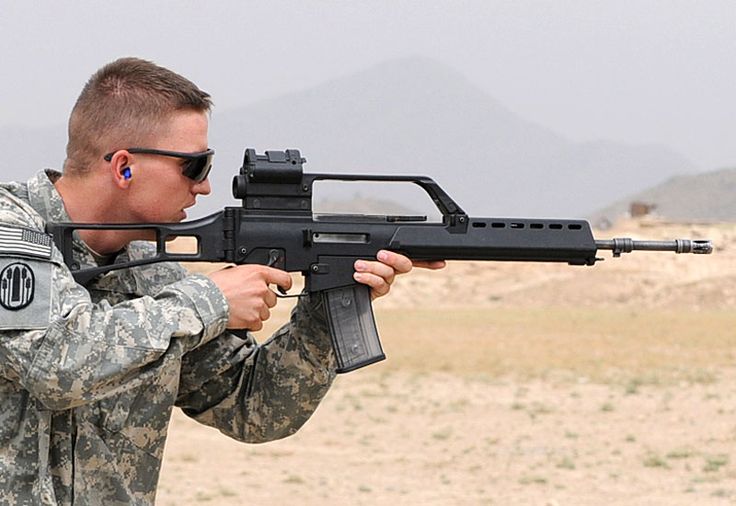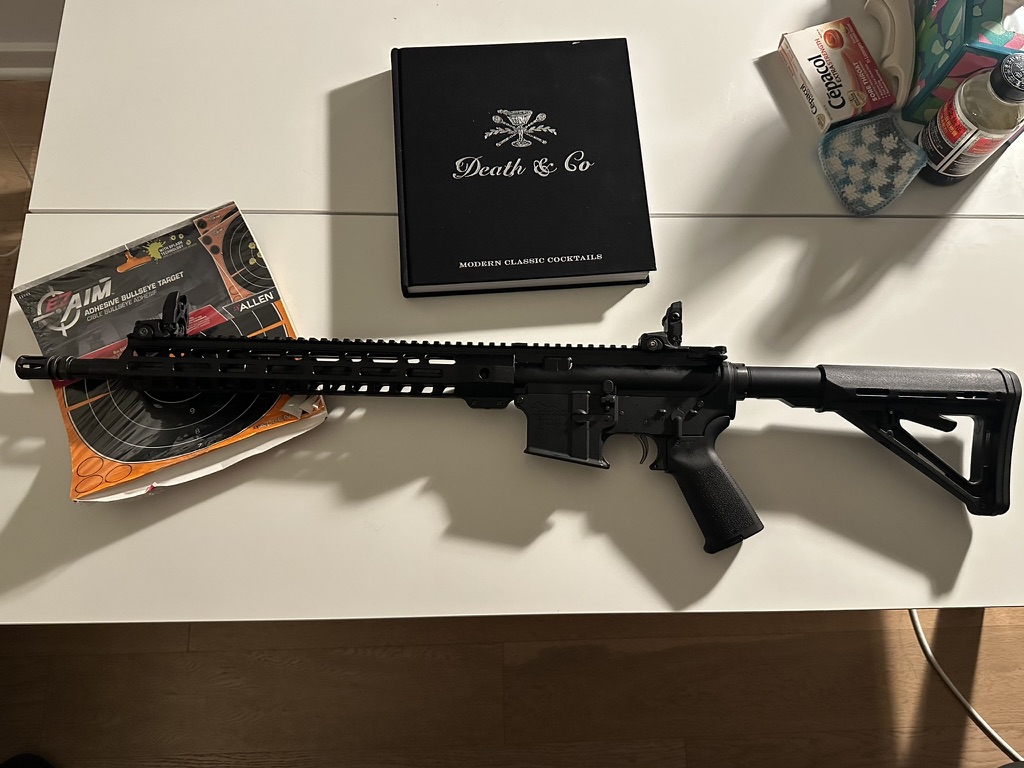The story of bringing the HK G36 to American hands is one of adaptation, regulation, and determination. From factory-neutered versions to innovative conversions, let’s dive deep into the history of how enthusiasts have pursued this iconic German rifle design.
The “Forgotten” SL8

Heckler & Koch’s first attempt at a civilian G36 came in the form of the SL8, produced from 1998 to 2011. While it maintained the core rotating bolt system similar to the AR-18, the rifle was heavily modified to comply with various gun control measures. Gone was the characteristic pistol grip and folding stock, replaced with a fixed thumbhole stock. The magazine capacity was restricted to 10 rounds, a far cry from the military G36’s standard 30-round magazines (but hilariously makes it CA compliant). These compromises, driven by the Gun Control Act of 1968 and subsequent regulations, ultimately led to the SL8’s poor sales and eventual discontinuation.
Enter Tommybuilt Tactical
As factory options disappeared, the firearms community found a champion in Tommybuilt Tactical. They two paths for G36 enthusiasts: complete SL8 conversions to G36 configuration, or the option to purchase the entire T36 rifle. The T36 allowed enthusiasts to skip the arduous and expensive process of converting an SL8, while still achieving the iconic G36 look and feel. Forum discussions reveal that while SL8 conversions with German parts were considered the gold standard, they became increasingly difficult as G36 parts kits grew scarce.
The T36 to TG36 Evolution
In early 2021, the firearms community was shaken when the ATF reclassified the T36 receiver as a machine gun, citing concerns about potential full-auto conversion. Rather than abandon the platform, Tommybuilt Tactical worked to develop an upgraded design. The result was the TG36, featuring additional blocking features to prevent conversion. In a note to T36 owners from Tommybuilt Tactical:
The ATF has made it clear that if your T36 is not returned for upgrade to the TG36, it will be considered contraband and subject to seizure.
Once seized you will lose your entire T36 assembly. The resolution that we are offering will allow you to keep ALL of your components in an upgraded state at a minimal cost.
While existing T36 owners had to pay $225 for mandatory upgrades, this solution allowed them to keep their investments legally functional.
The TG36 Experience

Recent user experiences with the TG36 reveal both its appeal and challenges. While praised for capturing the G36’s essence, some users report needed tweaks for reliable operation. Common adjustments include smoothing out polymer flashing, polishing feed ramps, and fine-tuning the bolt catch. However, owners consistently praise Tommybuilt’s customer service and willingness to address issues, even if some gunsmithing knowledge proves helpful.
The civilian G36 story exemplifies how regulation and innovation shape the American firearms market. While the original SL8 may have disappointed, the community’s determination and companies like Tommybuilt Tactical have kept the G36 dream alive, even if the path hasn’t always been smooth. However, there is hope:
Q: Are the G36 and the MP7 (US civilian offerings) Coming?
A: We have worked with ATF as well as the German authorities for a path forward. We consider these active (in progress) programs. It is likely that these will be released after 2025. We will not comment on these in-process programs again until we are closer to launch.
In a message from the CEO of HKUSA, we may have news by next year if there will be a US launch of these beloved firearms!





